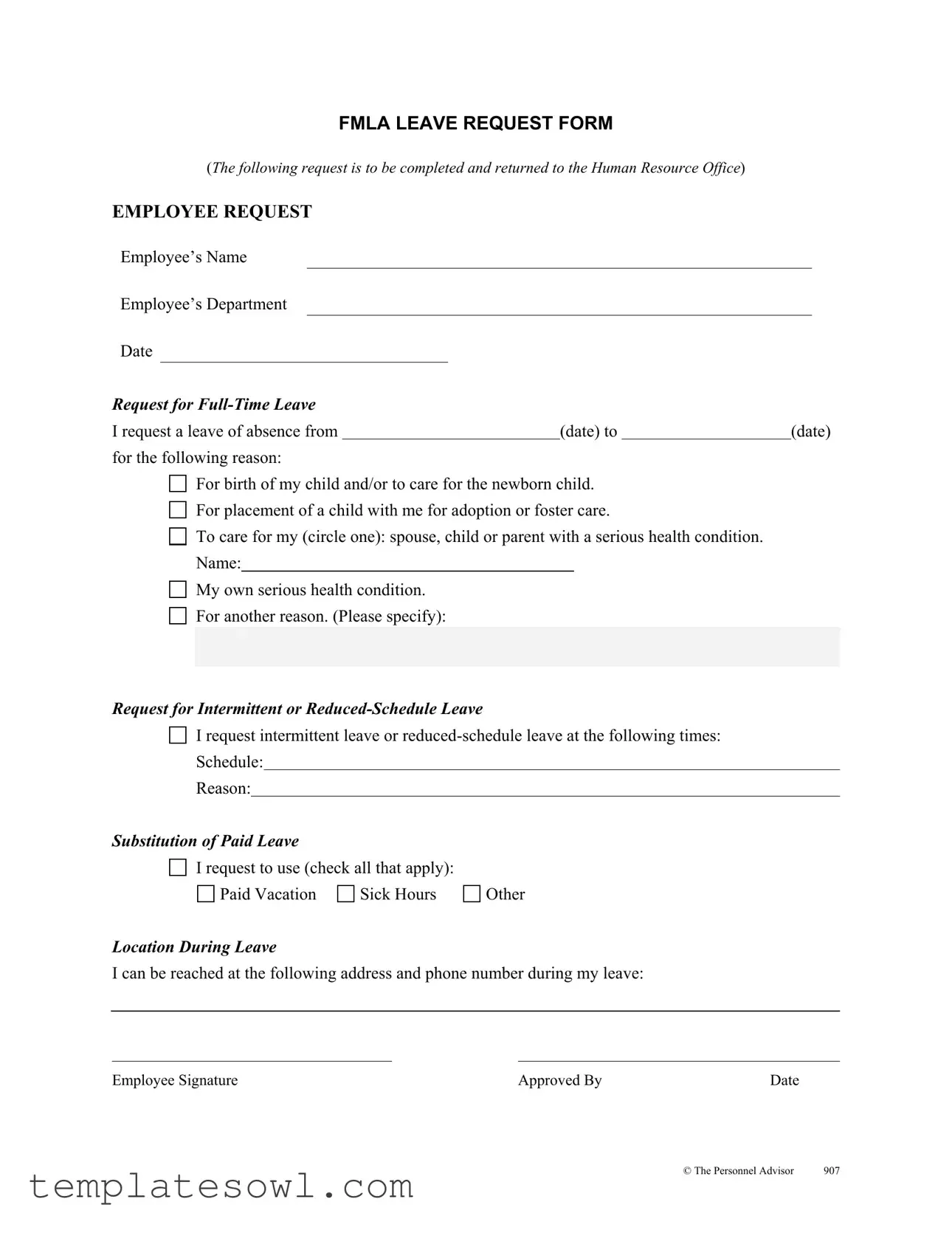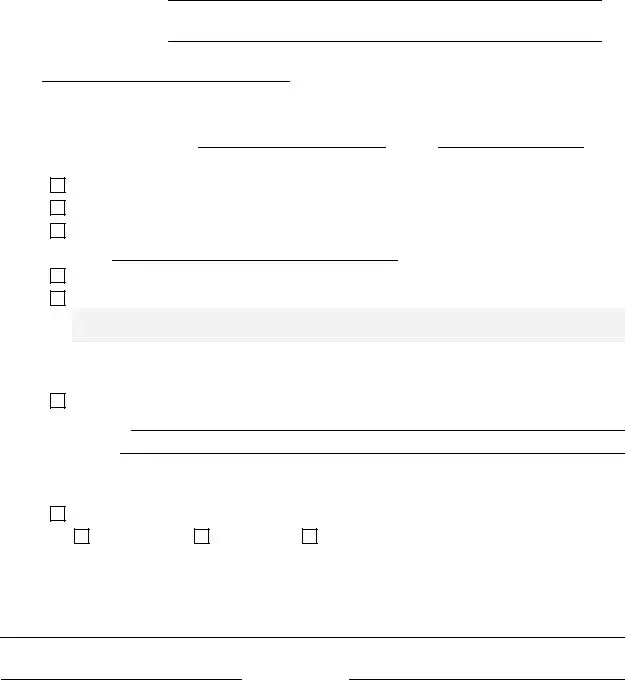What is the FMLA Leave Request Form?
The FMLA Leave Request Form is a document that employees use to formally request leave under the Family and Medical Leave Act (FMLA). This form helps employers track and approve requests for time off due to specific family or medical issues, such as the birth of a child, caring for a family member with a serious health condition, or an employee's own health condition.
Who is eligible to apply for FMLA leave?
Employees are eligible for FMLA leave if they have worked for their employer for at least 12 months, have logged a minimum of 1,250 hours of service in the past year, and work at a location where the company employs 50 or more employees within 75 miles. Be sure to confirm your eligibility before submitting a request.
What reasons can I give for requesting FMLA leave?
Employees can request FMLA leave for several reasons, including the birth of a child, placement of a child for adoption or foster care, caring for a spouse, child, or parent with a serious health condition, or their own serious health condition. If you have another reason, you can specify it on the form as well.
How do I complete the FMLA Leave Request Form?
To complete the form, fill in your name and department, the dates you are requesting off, and the reason for the leave. If you are requesting intermittent leave, include a schedule. Indicate any paid leave you wish to substitute, and make sure to sign the form before submitting it to your Human Resource office.
Can I take FMLA leave intermittently?
Yes, you can request intermittent or reduced-schedule leave under the FMLA. This allows you to take your leave in smaller chunks rather than all at once. Be sure to specify the days and times you need off when you complete the request form.
What happens after I submit my FMLA Leave Request Form?
After you submit your form, your employer will review your request. They may contact you for more information or to discuss your leave plan. Once a decision is made, you will receive a notification of approval or denial. Keep in mind that some companies may require additional documentation related to your reason for leave.
What should I do if my request for FMLA leave is denied?
If your request is denied, you have the right to ask for an explanation and any necessary documentation. You can appeal the decision within your company’s policy framework. It’s important to review your employer's FMLA policies and procedures or consult with a legal expert if you think your rights have been violated.
How can I ensure effective communication during my FMLA leave?
Staying in touch with your employer during your leave is important. Make sure to provide them with your contact information on the request form. Keep your employer updated about your health status and your return date whenever possible. Clear communication helps ensure a smoother transition back to work.

